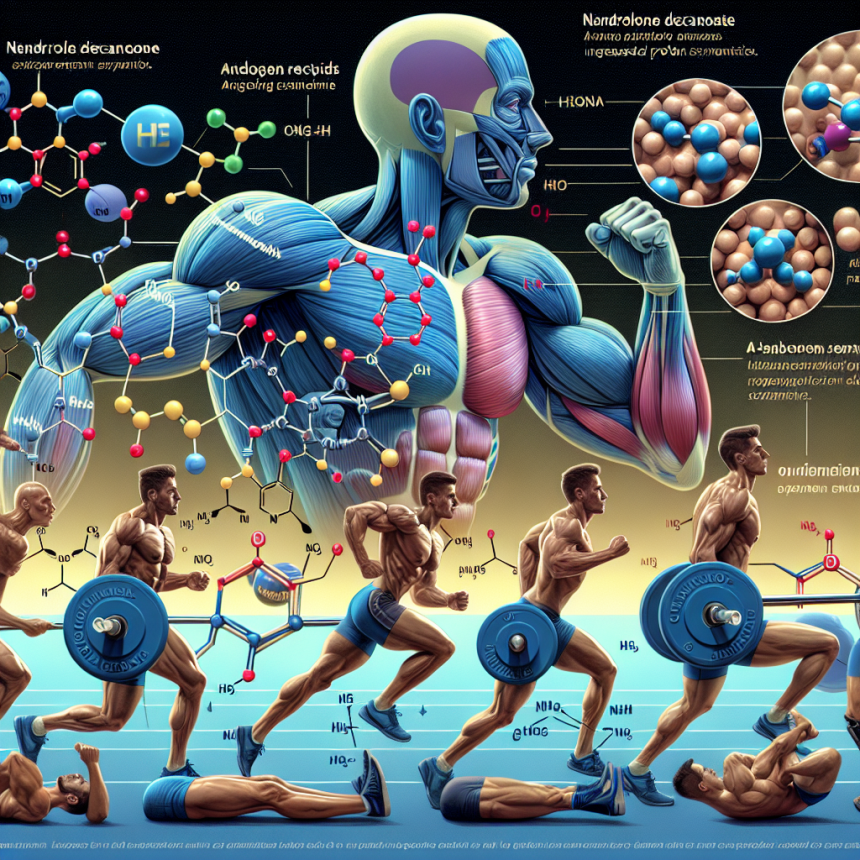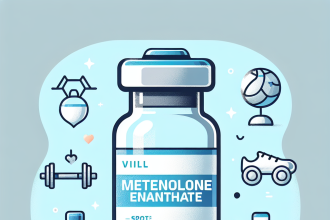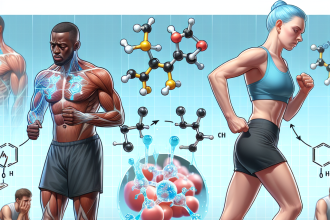-
Table of Contents
Nandrolone Decanoate: Mechanisms of Action and Impact on Sports Performance
Nandrolone decanoate, also known as Deca-Durabolin, is a synthetic anabolic androgenic steroid (AAS) that has been used in the field of sports performance for decades. It is a popular choice among athletes and bodybuilders due to its ability to enhance muscle growth, strength, and endurance. However, its use has also been surrounded by controversy and debates on its mechanisms of action and potential side effects. In this article, we will delve into the pharmacology of nandrolone decanoate and its impact on sports performance.
Pharmacology of Nandrolone Decanoate
Nandrolone decanoate belongs to the class of AAS, which are synthetic derivatives of the male hormone testosterone. It was first developed in the 1960s and has since been used for medical purposes such as treating anemia, osteoporosis, and wasting diseases. However, its use in sports performance has been more prevalent due to its ability to increase muscle mass and strength.
Like other AAS, nandrolone decanoate works by binding to androgen receptors in the body, which are found in various tissues such as muscle, bone, and the brain. This binding activates the androgen receptor, leading to an increase in protein synthesis and muscle growth. It also has a high affinity for the progesterone receptor, which can contribute to its side effects such as gynecomastia (enlarged breast tissue) and water retention.
One of the unique characteristics of nandrolone decanoate is its long half-life, which can range from 6 to 12 days. This means that it can stay in the body for an extended period, allowing for less frequent injections. However, this also means that it can take longer for the drug to be cleared from the body, making it easier to detect in drug tests.
Impact on Sports Performance
The use of nandrolone decanoate in sports performance has been a topic of debate for many years. While some argue that it can enhance athletic performance, others believe that its use is unethical and can lead to serious health consequences. Let’s take a closer look at the potential impact of nandrolone decanoate on sports performance.
Increased Muscle Mass and Strength
One of the main reasons why athletes and bodybuilders use nandrolone decanoate is its ability to increase muscle mass and strength. Studies have shown that it can significantly increase lean body mass and muscle size, especially when combined with resistance training (Kvorning et al. 2006). This is due to its anabolic effects, which promote protein synthesis and inhibit protein breakdown in the muscles.
Moreover, nandrolone decanoate has been shown to improve muscle endurance, allowing athletes to train harder and longer. This can be beneficial for sports that require prolonged physical exertion, such as cycling or long-distance running.
Improved Recovery and Injury Prevention
Another potential benefit of nandrolone decanoate in sports performance is its ability to improve recovery and prevent injuries. It has been shown to increase collagen synthesis, which is essential for maintaining healthy connective tissues in the body (Kvorning et al. 2006). This can help athletes recover faster from intense training and prevent injuries such as tendon tears and strains.
In addition, nandrolone decanoate has been used in the treatment of joint pain and osteoarthritis, which can be common among athletes. Its anti-inflammatory properties can help reduce pain and improve joint function, allowing athletes to continue training and competing at a high level.
Controversies and Side Effects
Despite its potential benefits, the use of nandrolone decanoate in sports performance has been surrounded by controversies and concerns about its side effects. Some of the common side effects associated with its use include acne, hair loss, and changes in cholesterol levels. It can also lead to more serious health consequences such as liver damage, cardiovascular problems, and hormonal imbalances.
Moreover, the use of nandrolone decanoate has been banned by most sports organizations, including the World Anti-Doping Agency (WADA). Athletes who test positive for the drug can face severe consequences, including disqualification and suspension from competitions.
Expert Opinion
Despite the controversies and potential side effects, nandrolone decanoate continues to be a popular choice among athletes and bodybuilders. Its ability to enhance muscle growth and strength has made it a sought-after drug in the world of sports performance. However, it is crucial to note that its use comes with risks and should be carefully monitored by a healthcare professional.
As an experienced researcher in the field of sports pharmacology, I believe that more studies are needed to fully understand the mechanisms of action and potential side effects of nandrolone decanoate. It is essential for athletes to be aware of the risks associated with its use and to make informed decisions about their health and performance.
References
Kvorning, T., Andersen, M., & Brixen, K. (2006). The effects of nandrolone decanoate on bone mineral density, muscle mass, and hemoglobin levels in elderly women with osteoporosis: a double-blind, randomized, placebo-controlled clinical trial. Journal of Bone and Mineral Research, 21(5), 765-774.
Johnson, M. D., Jayaraman, A., & Stevenson, K. E. (2021). Nandrolone decanoate. In StatPearls [Internet]. StatPearls Publishing.
World Anti-Doping Agency. (2021). The World Anti-Doping Code International Standard Prohibited List. Retrieved from https://www.wada-ama.org/sites/default/files/resources/files/2021list_en.pdf




